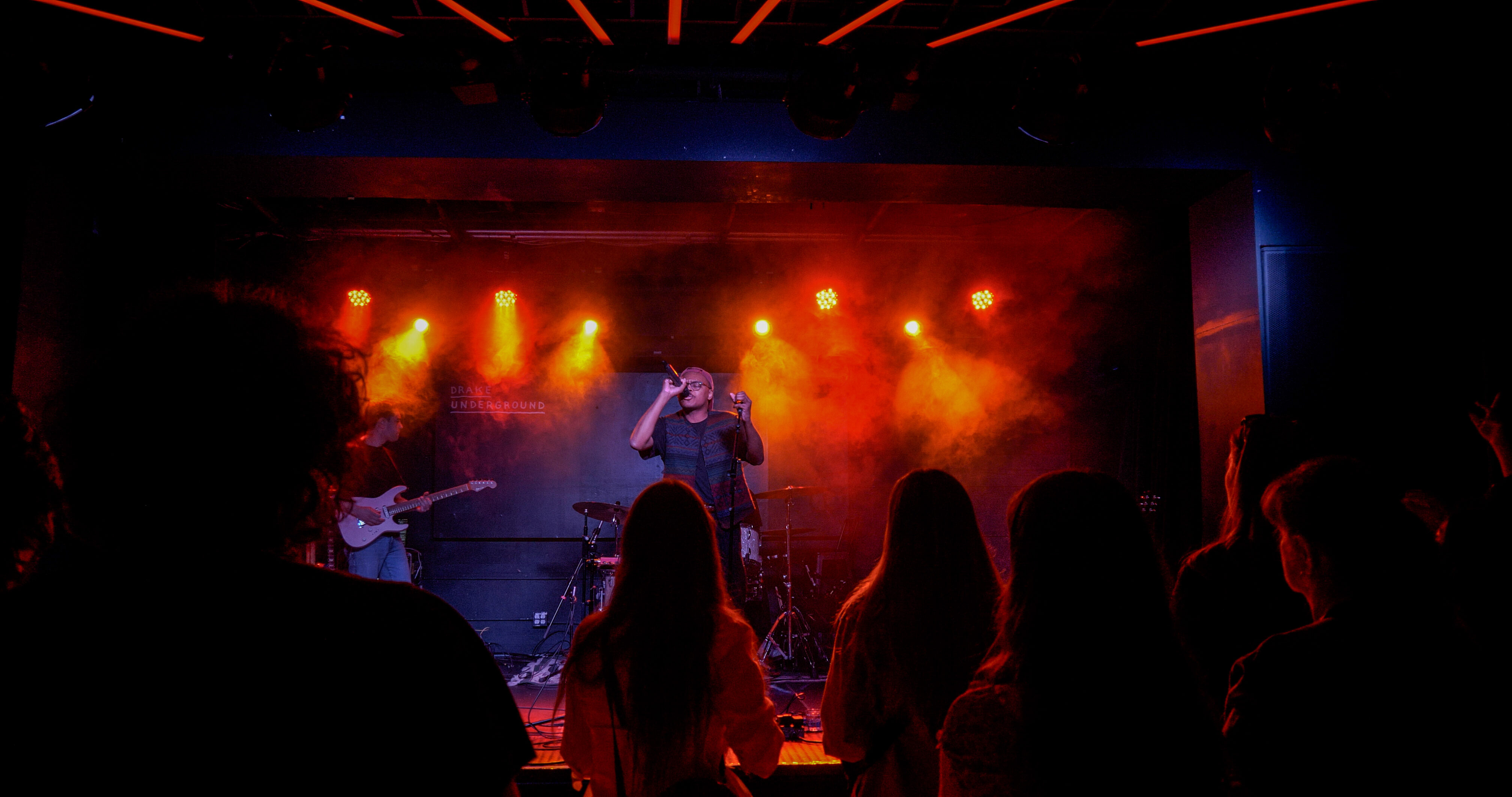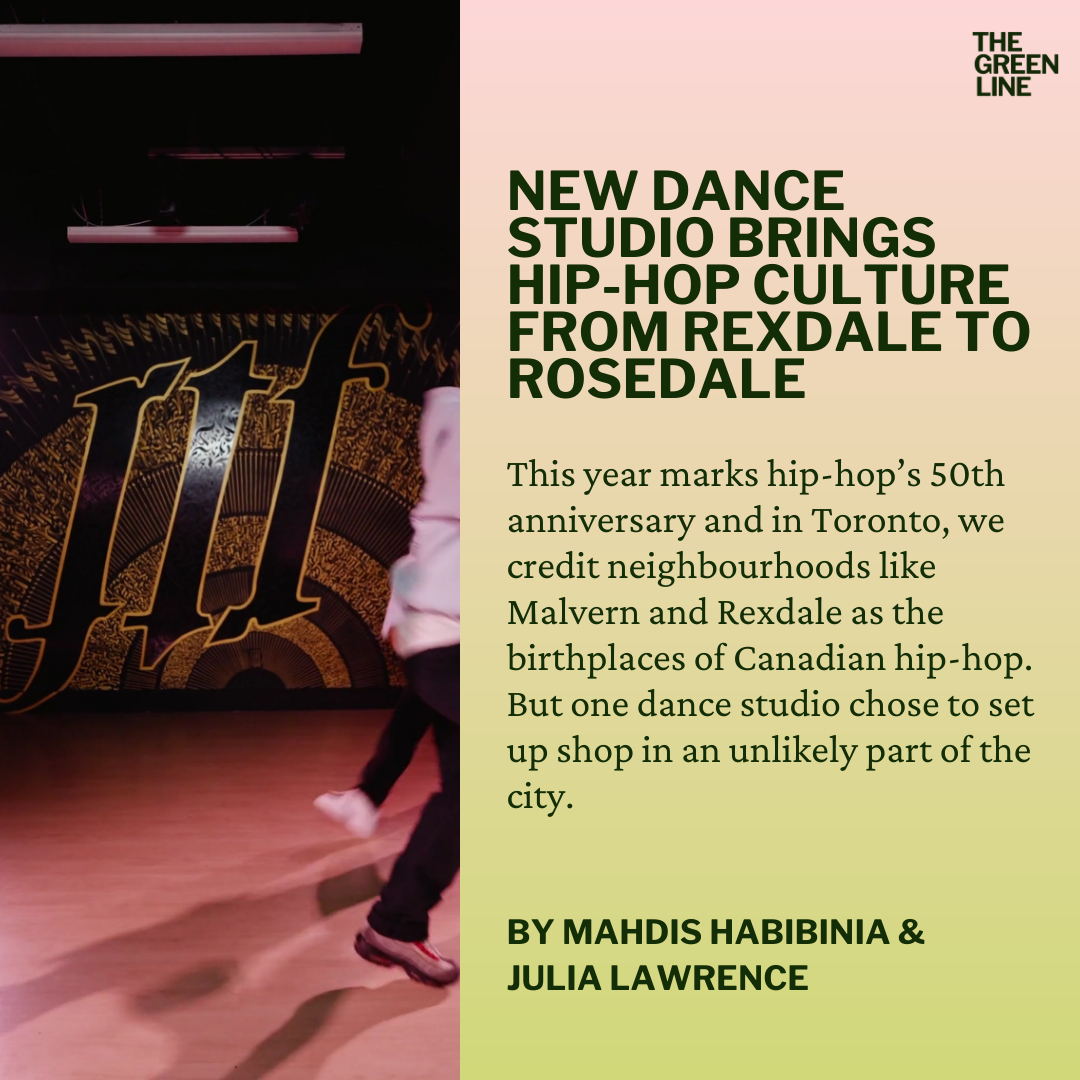THE GREEN LINE
ORIGINAL STORY
This studio wants to bring hip-hop back to Rosedale and celebrate its hidden history
From Rexdale to Rosedale, Run the Flex teaches hip-hop, including the history behind the choreography.

Nicole Rosove is co-owner of Run The Flex as well as a dance instructor.


MAHDIS HABIBINIA
An Iranian-Canadian who immigrated to Toronto at age 4. Master of journalism student at Toronto Metropolitan University. Avid true crime binger who wholeheartedly supports the Oxford comma.
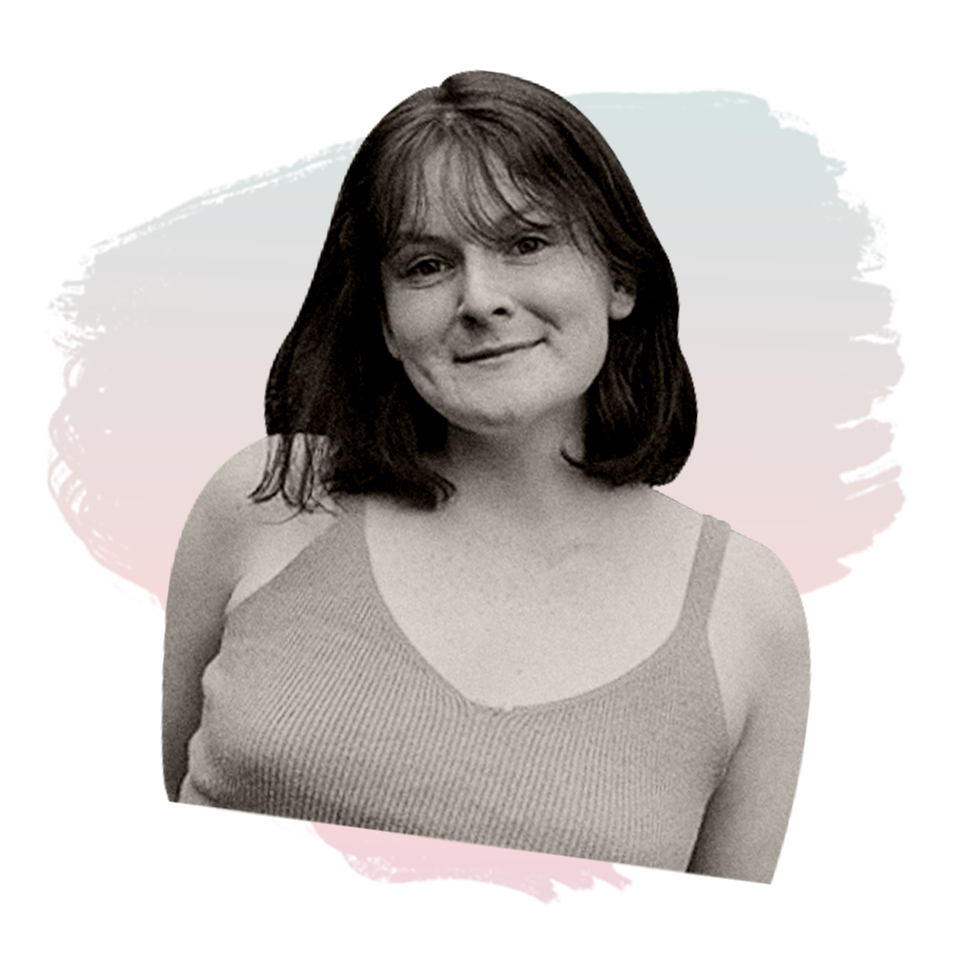
JULIA LAWRENCE
Aspiring film photographer who studies journalism, communication and design at Toronto Metropolitan University. Visits beaches at 6 a.m. to clear her head.
June 9, 2023
This year marks the 50th anniversary since hip-hop became established as both a musical genre and culture.
In Toronto, neighbourhoods like Malvern and Rexdale are credited with producing the most hip-hop artists and music in the city, but one dance studio chose to set up shop in an unlikely part of the city with a hidden hip-hop history.
Choreographers and co-owners Aaron Aquino-Annobil and Nicole Rosove, along with their third business partner Lisa Heath, opened Run The Flex dance studio this year after initially launching the dance program in 2017.
Located just north of Yonge Street and Davenport Avenue in the neighbourhood of Rosedale-Moore Park, the studio is aiming to bring the culture of hip-hop back to the downtown core and celebrate its history by teaching its students about the narratives and architects behind various choreography.
“I want dance to become the next jogging. A lot of people back in the days used to think that jogging was meant for athletes and Olympians to get ready for competitions and such. But now it’s become so normalized to just jog,” said Aquino-Annobil, who grew up in Rexdale’s Mount Oliver-Silverstone-Jamestown neighbourhood where he first started hip-hop dancing.
“I want to bring the culture of what we did, especially what I had from learning about hip-hop [and] my love of hip-hop, which technically did start [in Rexdale], and bring that to Rosedale,” he continued.
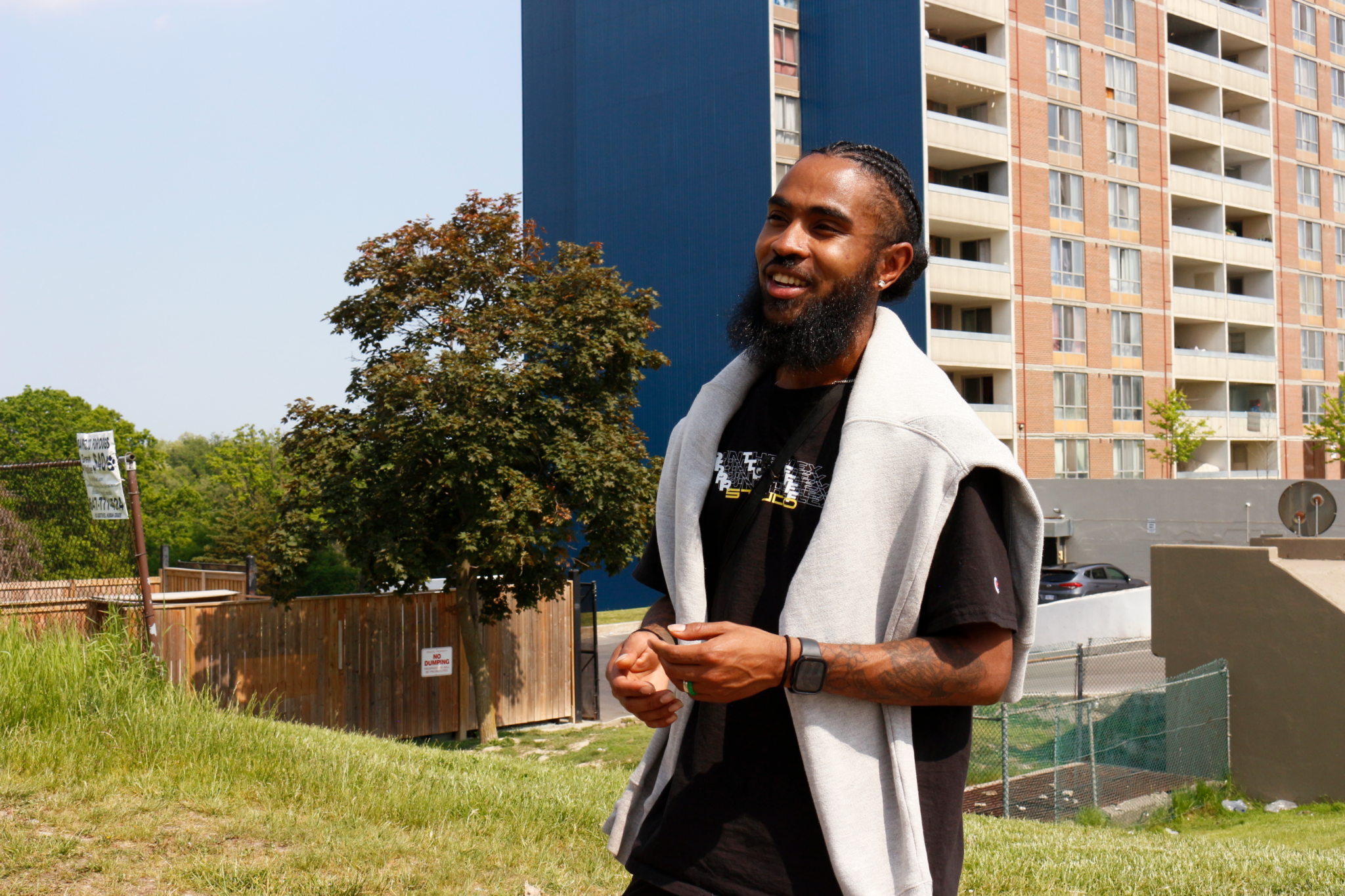
Aaron Aquino-Annobil grew up in the Rexdale neighbourhood of Mount Oliver-Silverstone-Jamestown where he first started hip-hop dancing.

Rosove said whether guests have two left feet, have never danced before or have training, there’s space for people of all ages.
She added that their motto, “From Rexdale to Rosedale,” comes from the Etobicoke neighbourhood’s rich history, and its production of artists and dancers. As a result, they want to “honour the culture” and “honour [Aquino-Annobil’s] childhood by bringing it to the core of the city where people might not have that knowledge.”
The intersection of Yonge and Davenport has historically been a central part of Toronto’s hip-hop scene. The Masonic Temple, a historic concert hall known to host jams, parties and rap battles, is located nearby.
“888 Yonge Street is where Ron Nelson was putting on concerts and bringing some of the emerging American hip-hop acts, who were still teenagers at the time, to Toronto to perform with local Canadian acts,” said Mark Campbell, assistant professor of music and culture at the University of Toronto Scarborough as well as founder of Northside Hip Hop Archive.
According to Campbell, the concert hall is also a place where a young Ice-T, Queen Latifah, LL Cool J, Ice Cube and KRS-One would have come to Toronto as emerging artists.
“Lots of young people would travel from Regent Park, Flemingdon Park, Etobicoke and Scarborough to be at the concert hall,” Campbell added.
But over the last few decades, the neighbourhood has seen an increase in condos and commercial buildings — much like the rest of Toronto — which brought higher rents and living costs that transformed the hip-hop scene downtown.
Campbell said many hip-hop clubs decided to make the move to Toronto’s east end as well as other parts of the GTA such as Pickering, Brampton and Mississauga.
“Hip-hop has been pushed out of the city along with many of the working class and middle-class racialized groups who are either starting families or trying to find lower rents,” explained Campbell.
“I would call the downtown Toronto hip-hop scene sparse and disconnected … At one point in time, you could find a venue each night that was playing hip-hop music and had a stage with live performance. There are places you could go to experience hip-hop music, but it does not lend itself well to hip-hop dance or the culture of breaking.”
Campbell added that now you might only find an event biweekly or monthly with smaller numbers in unpredictable places.
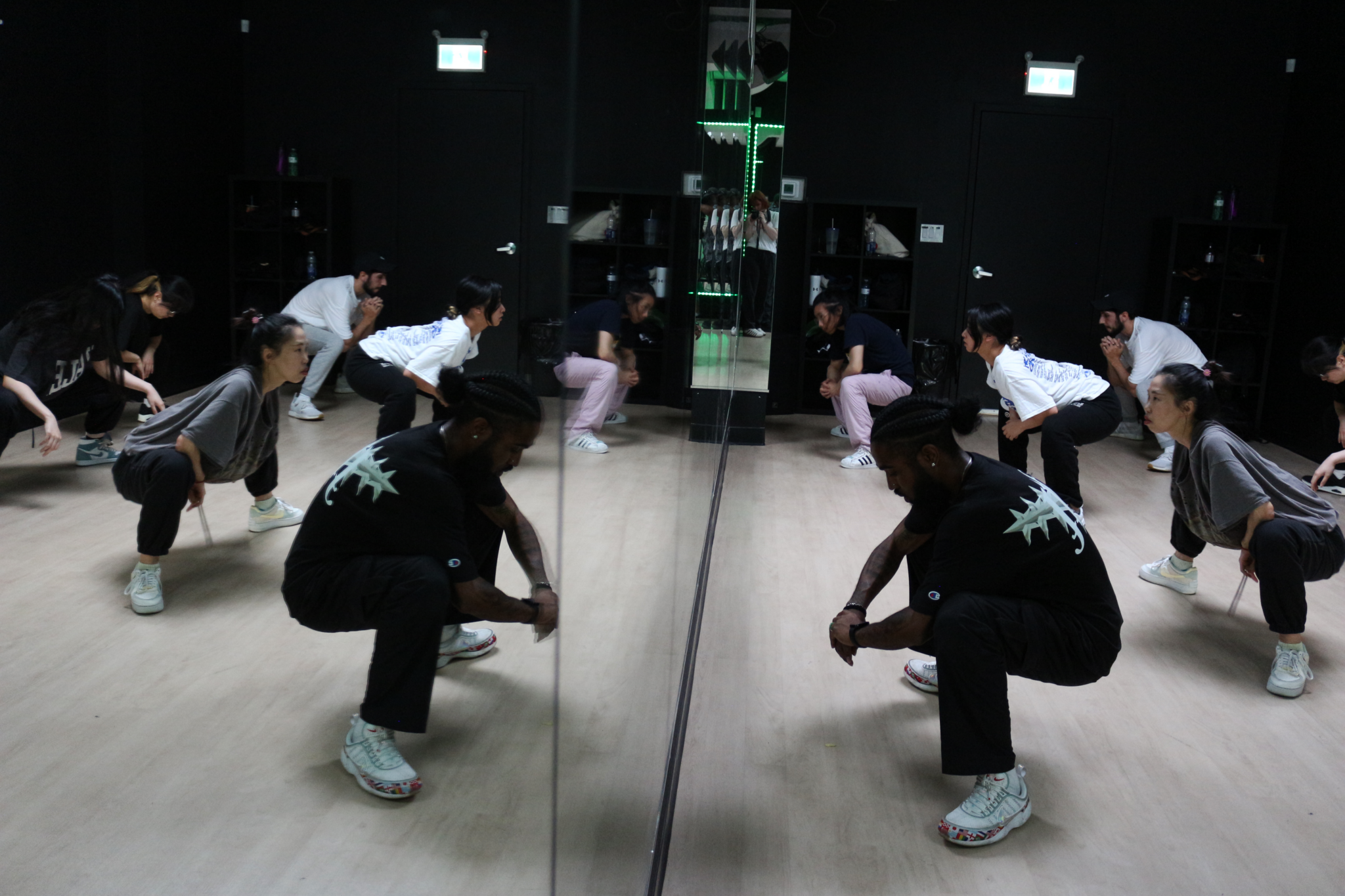
Aaron Aquino-Annobil teaches a dance class at Run The Flex.

Through the new studio, Aquino-Annobil and Rosove are working to make hip-hop dancing more accessible to Torontonians.
However, a key part of Run the Flex’s philosophy is to also teach students about the history, creators and evolution behind each dance move.
“It’s important to keep those stories alive because they came from somewhere. How are we going to move forward if we can’t move ten steps back and learn of the culture and the rawness that it came from,” said dance student Carina Kanaan.
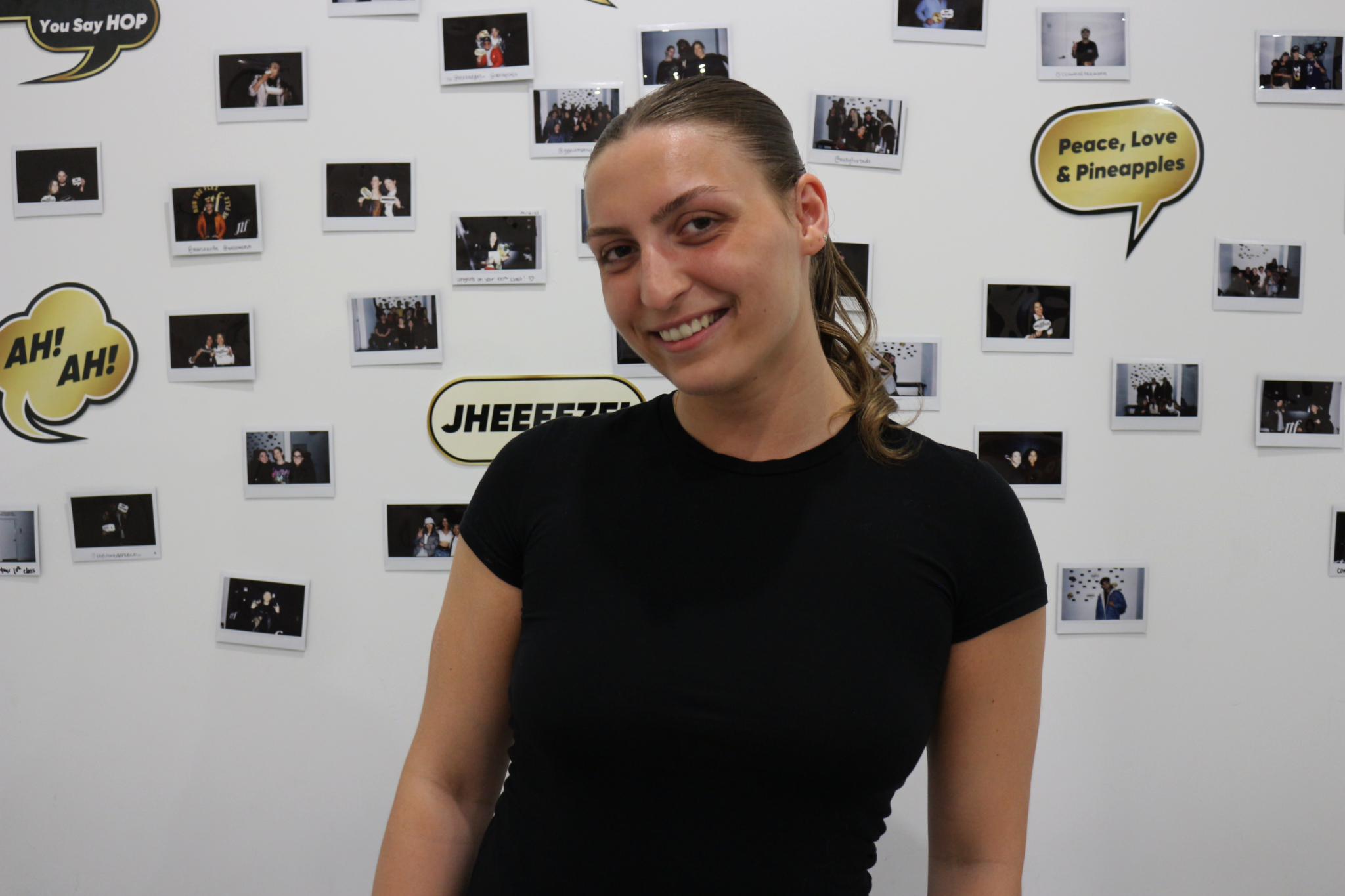
Carina Kanaan, a dance student at Run The Flex, started dancing hip-hop at the age of seven and says it is a form of expression for her.

According to Rosove, the educational component encourages retention and appreciation for the culture while giving the choreography more purpose and understanding.
This is a crucial element in today’s hip-hop scene since, according to Campbell, “the history of these dance moves are definitely disconnected from mainstream Top 40 music and movement. And you see this online, you see young people do dance moves that they have no idea where they’re from or what they’re about.”
The Charleston, for example, has strong parallels to dances originating from Trinidad, Nigeria, and Ghana but is associated with the South Carolina city.
In the early 1900s, African-Americans — who were living in a society with bonded labour and chattel — were often performing the dance against their will as part of their service and outside of the context in which they originated, Campbell said.
Another example of a dance with important historical context, Aquino-Annobil added, is the C-Walk which was created in the 1970s by one of the first members of the Crips street gang, Robert Jackson. Despite repetitive social media, pop culture and film appearances, according to Campbell, “it’s not necessarily the wisest thing to randomly do anywhere.”
Run The Flex’s lessons incorporate local history specific to Toronto as well.
“When we curated our faculty, we were really intentional about finding people who really knew what they were talking about,” said Rosove. “These are people that have really studied things like threading, gliding, tutting, moves that are local to Toronto, but they’ve also gone out in the world to absorb other cultures [and dance styles] and then brought it back.”
Campbell said it’s important for the general public to understand that “the hip-hop community is a community before it’s a scene” since individuals get together to support one another and encourage the creation of art, music and culture.
“But it’s not necessarily an industry, there’s no hip-hop industry in Canada and the industry is not the only metric of success,” Campbell added.
Echoing Campbell’s sentiments about community, Aquino-Annobil believes sharing knowledge about hip-hop’s culture — one of the five pillars of hip-hop cited by KRS-One — also means reinforcing its community values.
“Especially within the culture of hip-hop and with crews, the idea [that] you’re responsible for everyone in your crew. Everyone is a family. And that was one thing growing up in this neighborhood, a lot of it was family oriented,” shared Aquino-Annobil about Rexdale.
“I wanted to bring that aspect … to our clientele, letting them know when you are entering Run The Flex, you’re entering our family. You’re entering our community [and] we got your back, no matter what.”
Fact-Check Yourself
Sources and
further reading
Don't take our word for it —
check our sources for yourself.
